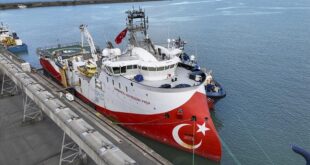The startup in 2020 of the 31.5 Bcm/year TurkStream pipeline triggered an unprecedented reshuffle in the way Russian gas reaches southeast Europe, and now with the start of flows via TurkStream’s onshore expansion, the picture is shifting once again.
Like the Nord Stream and Nord Stream 2 pipeline projects, TurkStream was designed to enable Russian gas to reach European markets without having to flow through Ukraine.
And although TurkStream has ultimately been a lower profile project, certainly compared with Nord Stream 2, its impact has been no less significant, switching the supply route almost completely for six countries.
Which doesn’t mean these countries — Turkey, Bulgaria, Greece, North Macedonia, Serbia, and Bosnia and Herzegovina — are any less dependent on Russian gas given that TurkStream has only changed the direction in which the gas arrives to market.
The Southern Gas Corridor and southeast Europe’s existing and planned LNG terminals in Croatia and Greece are tools designed to help with that job.
Trans-Balkan redundancy
So what has changed since the start of TurkStream and its recent onshore expansion? The main impact has been on Turkey itself.
In 2019, Turkey received an average of 11 million cu m/d of Russian gas via the Trans-Balkan pipeline — or a total of 4 Bcm, according to data from S&P Global Platts Analytics.
In previous years the volume sent via this route was as much as three times higher.
But from the start of 2020, all Russian gas flows to Turkey are carried either by the existing 16 Bcm/year Blue Stream line under the Black Sea or the 15.75 Bcm/year Turkish string of TurkStream.
Though the total volume of Russian gas arriving in Turkey in 2020 has not yet been made public, Gazprom CEO Alexei Miller in January this year said the company sold more gas to Turkey last year than it did in 2019 when volumes totaled 15.5 Bcm.
And in December, Gazprom Export CEO Elena Burmistrova said Russian gas supplies to Turkey via both Blue Stream and TurkStream were at record highs.
However, with a capacity to supply almost 32 Bcm/year via the two Black Sea lines, there is room for more Russian gas to reach Turkey, especially as Russia exported more than 27 Bcm/year to the country in the mid-2010s.
Burmistrova said in December that Gazprom was also in talks with its partners in Turkey about the potential use of the Turkish string of TurkStream to divert more gas into southeast Europe.
Bulgaria role
So far, Bulgaria is the country in southeast Europe to have seen the most change since the start of TurkStream.
In 2019, Sofia received 2.4 Bcm of Russian gas via the Ukraine-Moldova-Romania Trans-Balkan route and transited 4 Bcm more onto Turkey.
Fast forward a year, and the volume received via that route fell to almost zero, with TurkStream instead supplying the Bulgarian market.
A total of 5.5 Bcm of TurkStream gas flowed over the Turkish border into Bulgaria in 2020 via the new Strandhza 2 interconnection point, or an average of 15 million cu m/d.
Of that volume, some 2.84 Bcm was sent onto Greece via the existing Kulata/Sidirokastro interconnection point — the same point where Russian gas used to arrive in Greece via the Trans-Balkan line.
Another 0.32 Bcm was shipped onward to North Macedonia via the Zidilovo IP, and 0.04 Bcm moved to Romania at the Negru Voda IP in reverse mode, Platts Analytics data showed.
That suggests 2.34 Bcm of gas stayed in Bulgaria, in line with its 2019 imports of Russian gas.
Greece and North Macedonia now both receive all their Russian gas via TurkStream rather than through Ukraine.
Greece’s take of TurkStream gas in 2020 was up 18% on the 2.41 Bcm of Russian gas it bought the year before delivered by the Trans-Balkan line, while North Macedonia’s imports were also up from the 0.3 Bcm purchased in 2019.
That tallies with Miller’s comments in January, when he said “Turkey, Greece and North Macedonia all increased their gas purchases from Gazprom in 2020.”
Serbia mix
Since the start of 2021, another country has seen its gas supply mix turned upside down by TurkStream.
Serbia now receives most of its gas via the onshore extension of TurkStream at the newly created Kireevo/Zaychar interconnection point on the border with Bulgaria.
In January, supplies into Serbia via TurkStream averaged 8 million cu m/d, with flows through the traditional entry point via Hungary down to just 1.5 million cu m/d.
Previously, Serbia imported around 10 million cu m/d of Russian gas via Ukraine and Hungary.
Average flows at Strandhza 2 — the entry point into Southeast Europe for all TurkStream flows — are now up to 27 million cu m/d, the equivalent of almost 10 Bcm on an annualized basis and 12 million cu m/d higher than the 2020 average.
That is bringing TurkStream flows to southeast Europe closer to the 15.75 Bcm/year capacity of the European string of the pipeline.
Volumes are set to increase later in 2021 — Burmistrova in late December said the route in Bulgaria and Serbia was only “partially completed” and that it would ramp up to capacity from the second half of 2021.
Serbia bought 2.14 Bcm of Russian gas in 2019, delivered via Ukraine, while Bosnia imported 0.24 Bcm.
Gas from TurkStream is distributed via Serbia into Bosnia at the Zvornik IP, but some of the gas entering Bosnia could also have been part of the volumes supplied via Ukraine and Hungary.
Hungary, meanwhile, is set to enter the party toward the end of 2021.
It has said it would like to import up to 6 Bcm/year of gas via TurkStream and its associated onshore infrastructure once a new link up on the border with Serbia is complete, expected in October.
Tags Platts Russia Turkstream
Check Also
Slump in Coal Production Drags down Poland’s Economic Recovery
A 26% plunge in coal mining weighed on Poland’s industrial output in March 2024, casting …
 Iran Energy News Oil, Gas, Petrochemical and Energy Field Specialized Channel
Iran Energy News Oil, Gas, Petrochemical and Energy Field Specialized Channel



